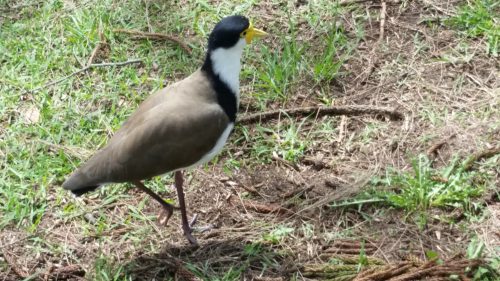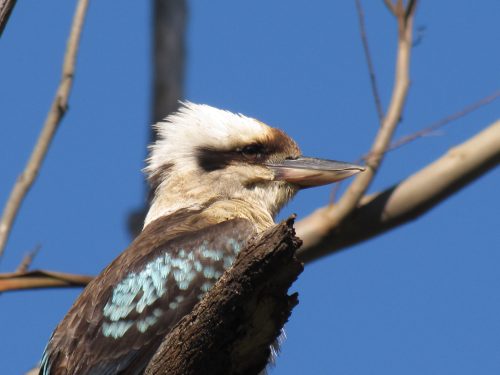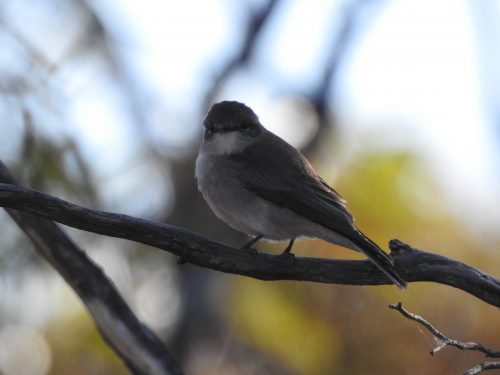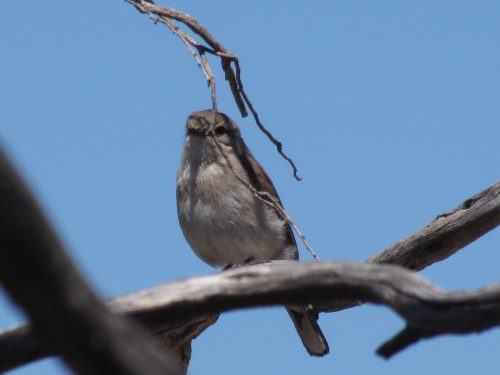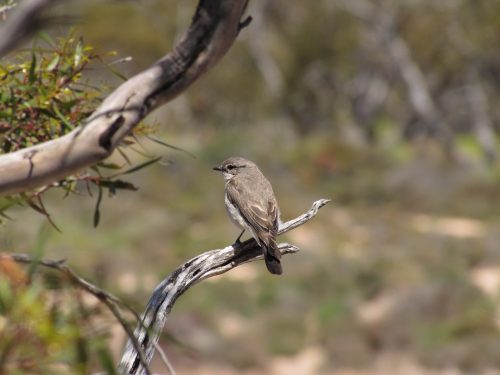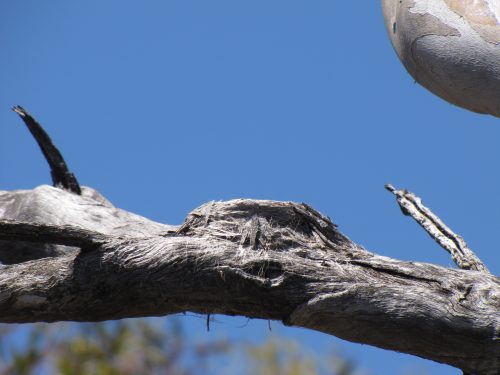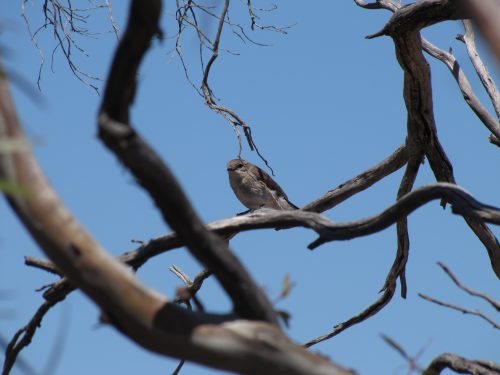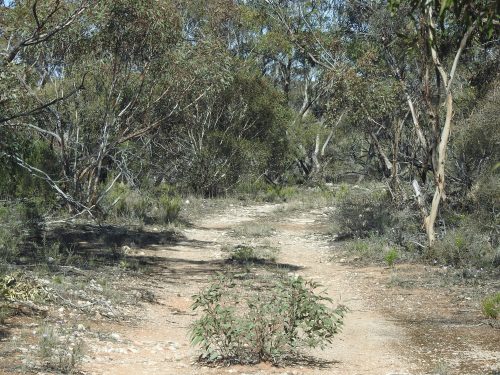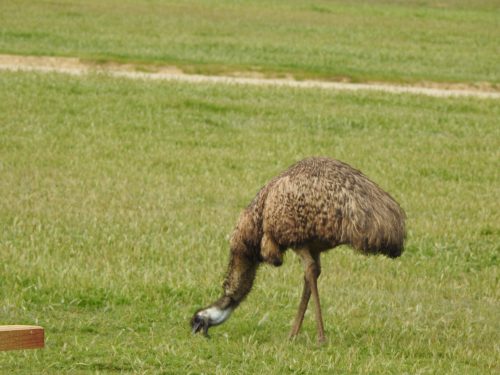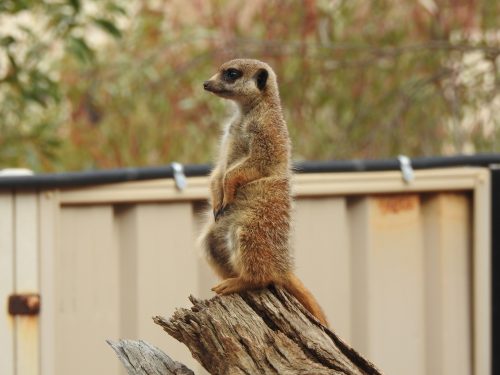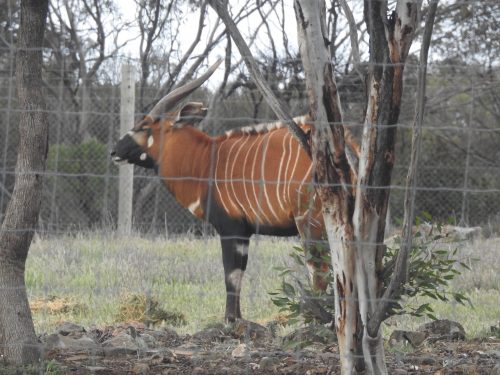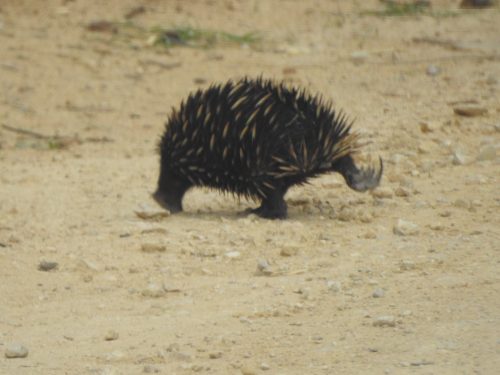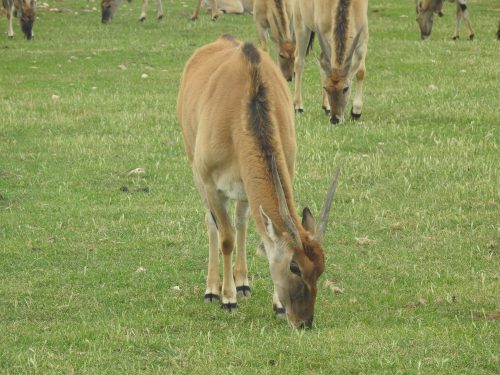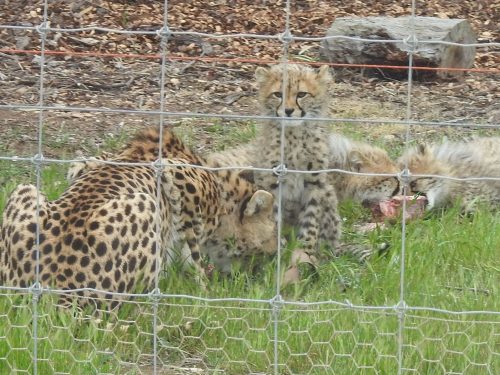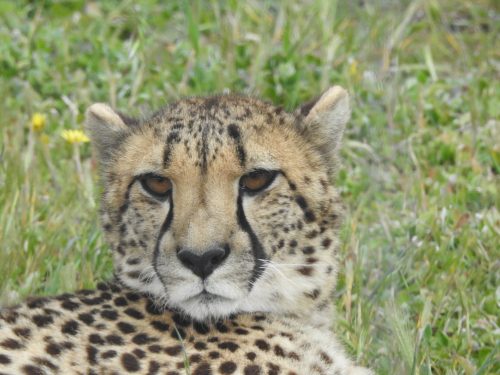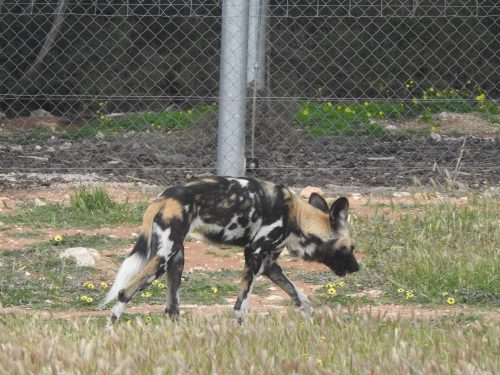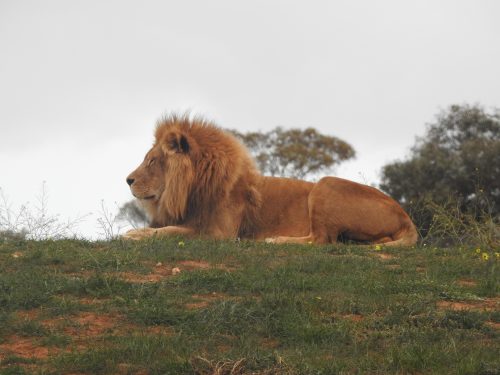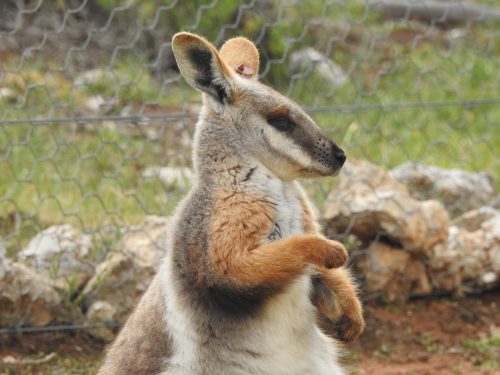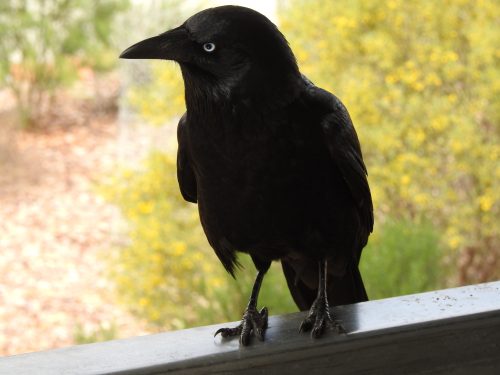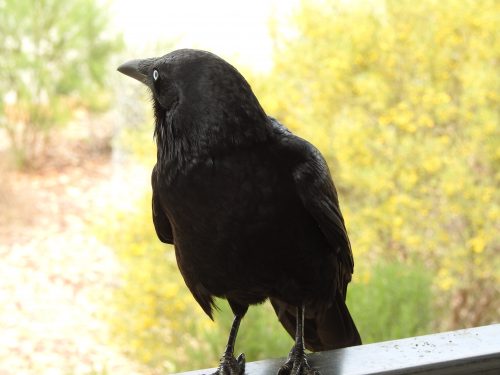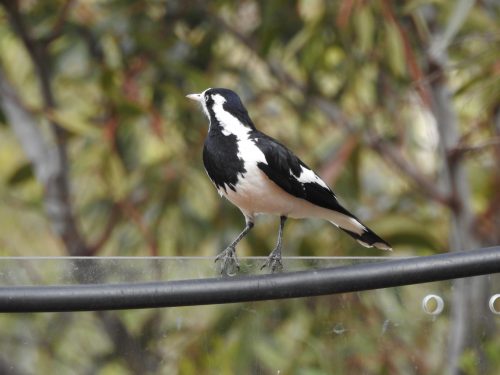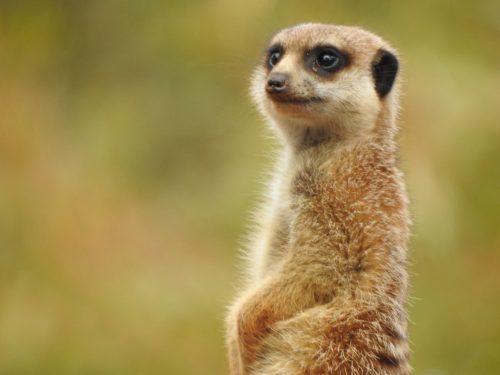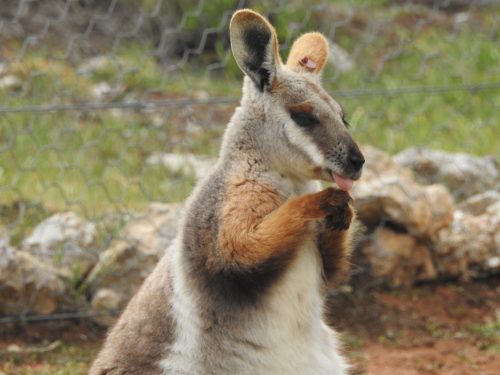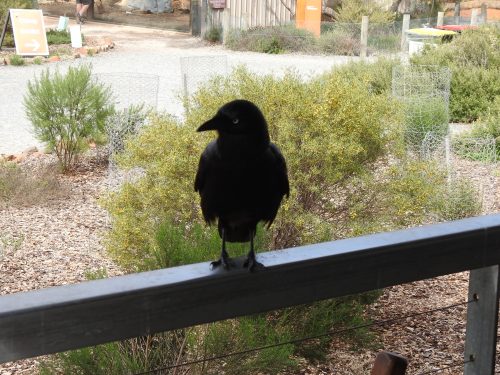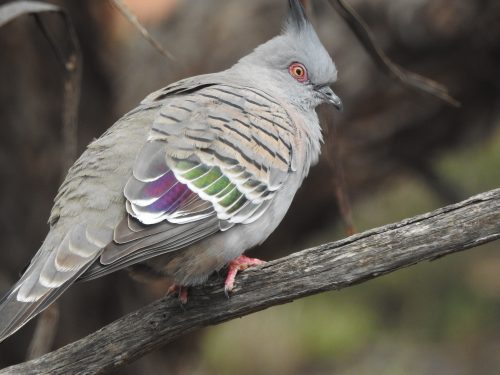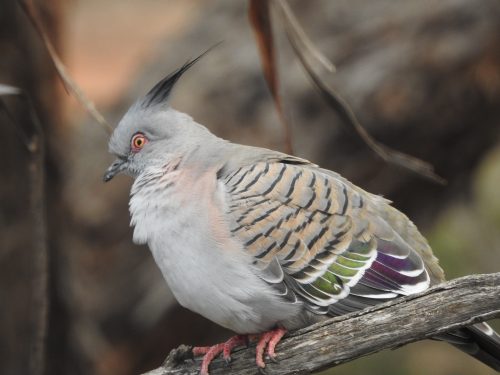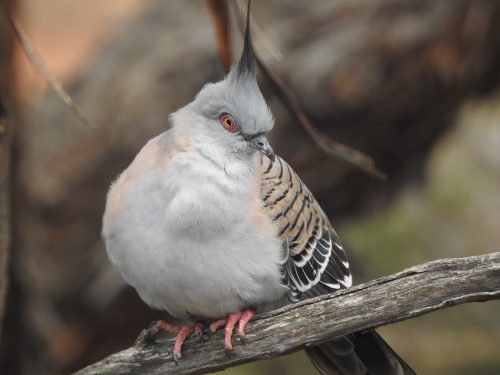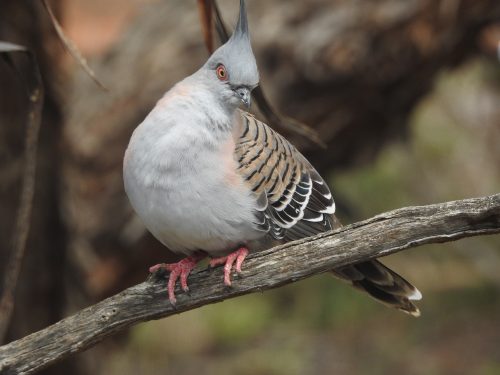A very cheeky lapwing
I recently went with my son and grandson to Little Athletics at the Rotary Athletics Field, Lane Cove, Sydney. On many occasions when I am in Sydney visiting my family, I have enjoyed seeing my grandson compete in the various events. He is quite talented and has even reached competing at the state level.
During the morning’s events, I made a note of all the bird species seen or heard. I have done this on most occasions on our visits to this athletics ground. On this occasion, all of the events had finished and the equipment was being packed away. My grandson and I bought some food for lunch from the barbecue which is provided every week and we were sitting on a nearby picnic ground adjacent the track. A Masked Lapwing flew in and landed only metres from where we sat. People were heading to their cars and it was quite unconcerned by their presence.
The bird actually came up to within a metre of where I was sitting. I am not sure if it wanted me to share some of my sausage or bun or was expecting some worms to fall out of my lunch. It hung around until I was finished eating and I managed to get my phone out of my pocket and take the photo above. No zoom needed – it was very close.
A little further off near the barbecue area, someone dropped a sausage on the footpath. It was only there for a few seconds until two Laughing Kookaburras swooped down from the nearby trees to grab the sausage. My grandson and I were amused by what happened next. The kookaburra picked up the sausage and proceeded to bang it on the ground, either to “kill” it or to break it up into smaller, more manageable chunks.
This incident reminds me of another occasion on a visit to the nearby Lane Cove National Park where we experienced some lunch snatching kookaburras.
Just a shy little Jacky Winter
Earlier this year I went for a Saturday afternoon drive to the Lowan Conservation Park near Bowhill north-east of my hometown of Murray Bridge, South Australia. I needed to get out of the house after some cold wintery weather, and my daughter had never been to this park. She had just returned home after teaching for the last two years in Ethiopia. The day promised to be sunny and calm, ideal for a picnic and a spot of birding. Over the years I have visited this small park in the mallee areas of our state on a few occasions and it sometimes throws up a few birding surprises.
As we had afternoon tea – a cuppa and some treats from our local bakery – we sat in the afternoon sunshine. My daughter had her current book to read (Tim Winton’s The Shepherd’s Hut) and I had my camera and binoculars at the ready. Flitting around in the nearby mallee trees was a Jacky Winter, one of our flycatcher species. It’s called a Jacky Winter possibly due to its call which sounds a bit like it is saying ‘jacky winter, jacky winter.’ At least, that’s what it sounds like to me. Another common name is ‘Peter Peter’ and that is probably a closer rendition of its call. Whatever the origin of the name, the bird is a generally unassuming little bird which can often go unnoticed in the Australian bush. More often it is sighted quietly sitting on a branch, a tree stump or fence post watching the surrounding grass intently, just waiting to snatch up a tasty morsel – a passing insect or two.
On this visit to the Lowan Conservation Park, I had good views of this bird, but I had trouble getting my camera focussed on this individual. It kept flitting around, catching afternoon tea and calling all the time. Every time I would try to focus – off it would go again. The only time it sat still enough for a shot in focus it was in the shade – see the photo above.
So that you can get a better view of this species, I have posted several photos taken two years ago in the Murray-Sunset National Park in north-west Victoria. These shots include the beginnings of a nest consisting mainly of a spider web.
Further reading:
Animals of Monarto Zoo
Earlier this week I posted here on this site an article about a recent visit to Monarto Zoo in South Australia. This zoo is not much more than about 15 minutes drive from my home in Murray Bridge. It forms a part of the great collection of animals in the Adelaide Zoo. I am a member of both so I try to visit the zoos on a regular basis. On this last visit, I not only saw a nice list of native birds which inhabit this open range zoo but I also managed a few good photos of many of the animals which I have decided to share today in this post.
One of the features of Monarto Zoo is that it is an open-range zoo. All of the larger animals are in open paddocks through which visitors are taken on a guided bus tour. The zoo used to be a farm, but the fenced enclosures now keep in exotic and Australian animals, not sheep or cattle. Some large sections of the zoo are natural scrub, areas which were never cleared by the original farmer. Some species native to this region remain trapped inside the zoo, species such as grey kangaroos, emus and the echidna shown in the photo above. This little fellow smartly crossed the road while the tour bus was parked so that visitors could get off or on the bus. While the echidna is widespread in this region, in my experience one does not come across one very frequently, possibly because they are largely nocturnal. It was good to see that the species is alive and well in the confines of the zoo. From time to time I also have one come to visit my garden.
Over recent months there has been quite a number of baby animals born in Monarto Zoo, including the adorable Cheetah cubs shown in the photo above. I also managed a good portrait shot of the mother, shown below.
The magnificent male Lion shown in the photo above is actually sitting on top of a human enclosure. For an extra fee, visitors to the zoo can enter this ‘cage’ and experience the Lions up close – and visitors can feed the lions meat through the grill of the human cage. I haven’t yet taken advantage of this experience but I plan to do it sometime later this year. It should be awesome.
My last photo today is of one of the Yellow-footed Rock-wallaby. No guessing how it got its name. This species can be found in the more remote parts of South Australia such as the Flinders and Gawler Ranges. I have seen them in their natural environment but that was many years ago.
I hope that you enjoyed the photos. Please leave a comment about your encounters with any of these species.
Trevor
A Cheeky Raven at Monarto Zoo
A few weeks ago my daughter suggested that we visit the Monarto Zoo. It had been about a year since my last visit which is rather poor of me because it is only a ten-minute drive from my home in Murray Bridge, South Australia. And I am a member so I can enter whenever I please at no cost. Monarto Zoo is a part of the Adelaide Zoo which I also must visit again soon.
Before we went on the guided bus tour of the open range zoo we decided to buy our lunch from the cafe in the Visitor Centre. We found a suitable table overlooking the garden and before we had even started eating, one of the local Little Ravens came to join us. Just like many species of birds, this Raven had learned that people are often associated with food. It certainly was not shy and landed on the railing right next to our table. I could have reached out and touched it. I am not normally in favour of feeding our native birds, but my daughter has no such reservations. Nor did the Raven – it gratefully took the food handed out and flew off to a nearby mallee tree to consume the handout. It returned several times, both to our table and to the tables of other zoo visitors.
During our lunch, we were also visited by several Magpie-larks, another common species in this area. While they came close to our table, they never ventured as close as the Raven. I managed a good photo of the female while it was perched on the glass fence of the nearby Meerkat enclosure.
Monarto Zoo has a wonderful collection of the adorable Meerkats on display. With their enclosures having glass surrounds, everyone can get excellent views of these wonderful creatures. I have included a photo below. I have also included a photo of the beautiful Yellow-footed Rock-wallaby which is native to the Flinders Ranges in the northern parts of South Australia.
The beautiful Crested Pigeon
A few weeks ago I was sitting at the table in my sunroom reading the daily paper. I was suddenly distracted by some birds at my bird baths just outside the window. This is a favourite place of mine to sit because I have an uninterrupted view of several bird baths strategically placed in my garden. During the warmer weather, there is often a steady stream of birds coming to drink and bathe in the water. Sometimes, the bird baths need daily replenishment. Many of the photos featured on this site have been taken of birds at the birdbath.
Once I saw that the bird was a Crested Pigeon sitting quietly on a branch near the top bird bath, I went to get my camera. It stayed there on the birdbath for a few moments, and then it moved to a nearby branch. It was then that its wing feathers caught the rays of the sun and showed up the brilliant iridescent colours (see the photos above and below). On most occasions, this species appears to be a dull grey with only a few white and black markings. In certain angles of the sunlight, the colours show up beautifully. When I zoomed in to take close-up photos, the beauty shows up even more – as seen in today’s selection of photos.
I have often written about the Crested Pigeon on this site, and I have shared many photos of them over the years. To read these articles and see the photos use the search button at the top of the page or click here.
The individual in today’s photos stayed around for about five minutes, enabling me to take plenty of shots in various poses. Bird photography can sometimes be a little frustrating because the subjects have a tendency to up and fly off – just when the camera has focussed on the bird. When they do pose nicely it is a wonderful bonus.
Enjoy.
